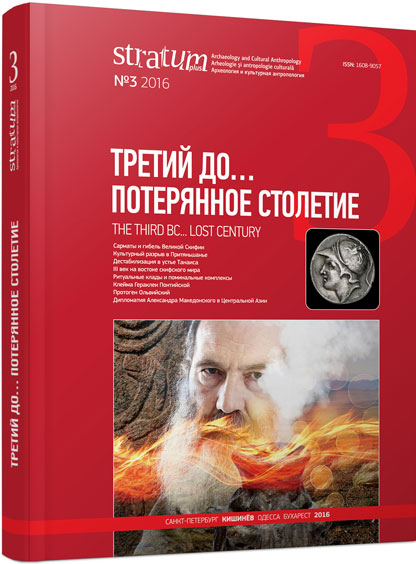О вариантах обряда захоронения «ритуальных кладов» III—I вв. до н. э.
About Variants of the Funeral Practice of “Ritual Hoards” of 3rd—1st Centuries BC
Author(s): Vyacheslav P. GlebovSubject(s): History, Archaeology, Cultural history, Ancient World
Published by: Издательский дом Stratum, Университет «Высшая антропологическая школа»
Keywords: South Eastern Europe; Sarmatian time; «ritual hoards»; variants of the funeral practice; big barrows; hills; slopes of the beams
Summary/Abstract: “Ritual hoards” of 3rd—1st centuries BC represent sets of items, consisting usually of finds of horse harness and weapons, often placed in the cauldron, situla or helmet. According to the placing and character of burials, there are three main variations of the rite: 1) in mounds of high barrows mainly in their central part, often at big depth; 2) close to barrow cemeteries, in hills or on the ancient ground surface with construction of small mound over the place of burial of the “hoard” — usually complexes of this variation were accompanied by aggregations of fragments of amphorae, as well as pottery and handmade ceramics; 3) on slopes of gulches.
Journal: Stratum plus. Археология и культурная антропология
- Issue Year: 2016
- Issue No: 3
- Page Range: 145-161
- Page Count: 17
- Language: Russian
- Content File-PDF

